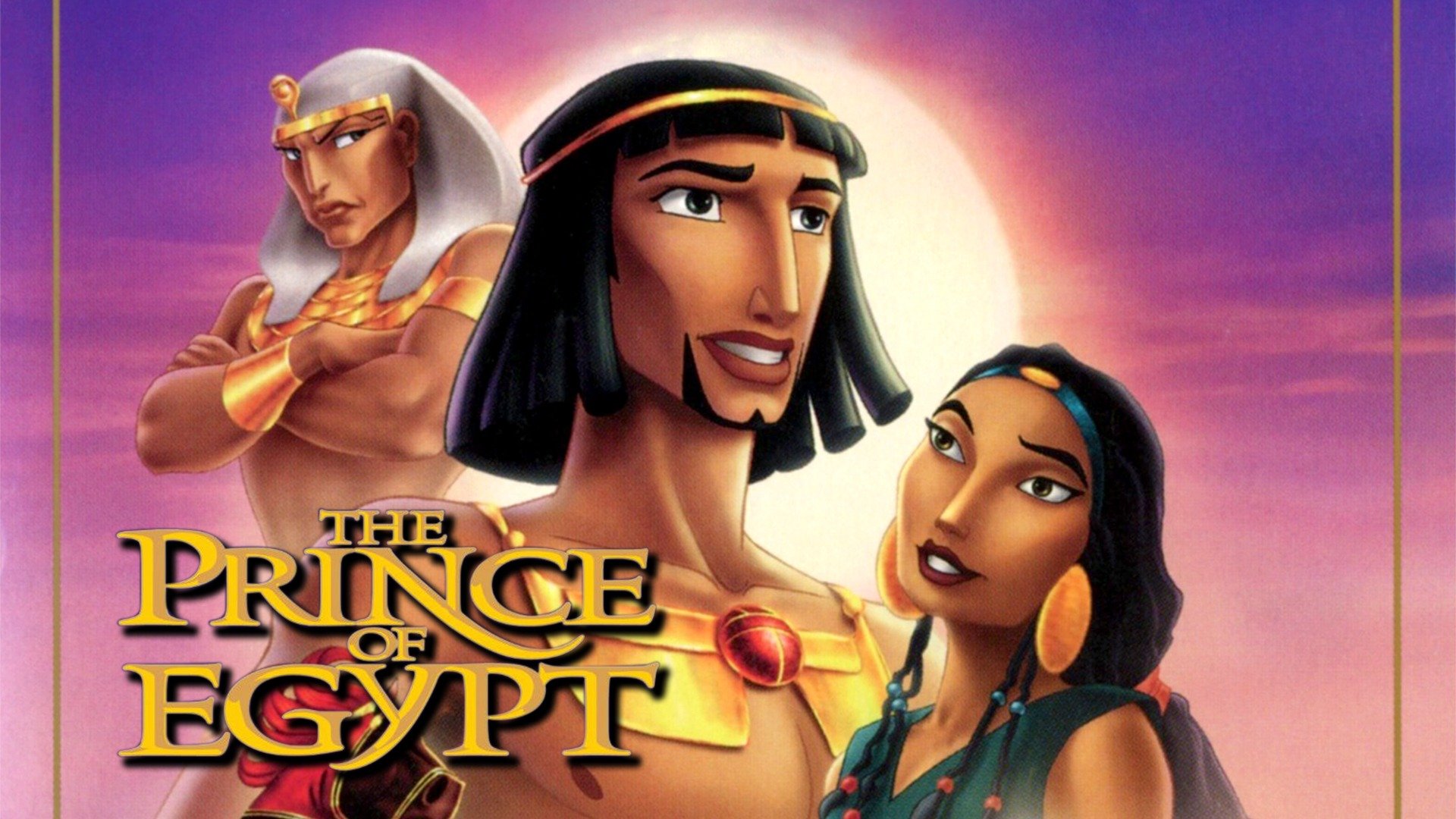
The Prince of Egypt is an inspiring and visually stunning animated film that tells the epic biblical story of Moses and the Exodus. Released in 1998, this critically acclaimed movie remains a fan favorite, captivating audiences of all ages with its powerful storytelling, breathtaking animation, and memorable musical score. Directed by Brenda Chapman and Steve Hickner, with music composed by legendary composer Hans Zimmer, The Prince of Egypt takes viewers on a thrilling journey of faith, courage, and self-discovery. In this article, we will explore 38 fascinating facts about The Prince of Egypt, shedding light on the making of this remarkable film, its cultural impact, and the behind-the-scenes details that make it a true cinematic gem.
Key Takeaways:
- The Prince of Egypt is an epic animated film that won an Academy Award and inspired a Broadway musical. It explores themes of faith, family, and freedom, resonating with audiences of all ages.
- With stunning animation and a powerful soundtrack, The Prince of Egypt tells the biblical story of Moses in a visually captivating and emotionally impactful way. It’s a timeless film that continues to inspire and entertain viewers.
The Prince of Egypt was released in 1998 by DreamWorks Animation.
The Prince of Egypt is an animated musical film that tells the epic biblical story of Moses and his journey to freedom. It was directed by Brenda Chapman, Simon Wells, and Steve Hickner.
The movie features an all-star cast, including Val Kilmer as Moses, Ralph Fiennes as Rameses, Michelle Pfeiffer as Tzipporah, and Sandra Bullock as Miriam.
The talented voice cast brought the characters to life with their exceptional performances.
The Prince of Egypt won the Academy Award for Best Original Song.
The unforgettable song “When You Believe” performed by Whitney Houston and Mariah Carey captured the hearts of audiences worldwide.
The film’s animation is visually stunning, featuring groundbreaking computer-generated imagery (CGI) that brought the ancient Egyptian world to life.
The attention to detail and vibrant colors create a visually captivating viewing experience.
The Prince of Egypt explores themes of faith, family, and freedom, making it a powerful and inspiring film for viewers of all ages.
The story of Moses’ journey from prince to prophet resonates with audiences and showcases the strength of the human spirit.
The movie’s soundtrack was composed by Hans Zimmer, who is known for his exceptional film scores.
Zimmer’s music adds depth and emotion to the film, enhancing the storytelling experience.
The Prince of Egypt was a box office success, grossing over $218 million worldwide.
Its popularity speaks to the widespread appeal and impact of the film.
The movie’s script was written by Philip LaZebnik, who ensured that the story stayed true to its biblical origins while adding depth and complexity to the characters.
LaZebnik’s writing successfully balances the historical accuracy and cinematic storytelling.
The Prince of Egypt features some memorable and emotionally charged scenes, such as the parting of the Red Sea and the burning bush.
These moments leave a lasting impression on the audience and contribute to the film’s overall grandeur.
The film received critical acclaim for its animation, music, and storytelling.
Many praised its faithfulness to the biblical source material while also adding a fresh and engaging perspective.
The Prince of Egypt inspired a Broadway musical adaptation.
In 2017, the musical premiered, bringing the story of Moses to the stage with new songs and stunning visuals.
The movie’s themes of leadership, sacrifice, and personal transformation resonate with viewers on a deep level.
The character arcs and moral dilemmas portrayed in the film provide valuable lessons for audiences.
The Prince of Egypt showcases the power of forgiveness and the strength of familial bonds.
The relationship between Moses and Rameses serves as a central focus, demonstrating the complexities of brotherhood and the consequences of choices.
The animation team extensively researched ancient Egyptian history and architecture to accurately depict the setting and culture of the film.
The attention to detail in the backgrounds adds an extra layer of authenticity to the movie.
The Prince of Egypt features iconic musical numbers, including “Deliver Us,” “Playing With the Big Boys,” and “The Plagues.”
These songs are expertly choreographed and showcase the immense talent of the voice cast.
The film’s release sparked dialogue and discussion about faith, spirituality, and the power of storytelling.
It prompted viewers to reflect on their own beliefs and values.
The Prince of Egypt was highly praised for its portrayal of strong and independent female characters, such as Tzipporah and Miriam.
The film challenges traditional gender roles and highlights the important contributions of women in history.
The movie’s hand-drawn animation sequences add a distinctive and artistic element to the overall visual presentation.
This combination of traditional and computer-generated animation techniques elevates the film to a new level of cinematography.
The Prince of Egypt was a collaborative effort between DreamWorks Animation, which was founded by Steven Spielberg, Jeffrey Katzenberg, and David Geffen.
The film represents the creative vision and innovation of these industry titans.
The movie’s depiction of the ten plagues of Egypt is both awe-inspiring and terrifying.
The vivid imagery and sound design make these scenes standout moments in the film.
The Prince of Egypt serves as an excellent educational resource, introducing viewers to ancient history, culture, and mythology.
It sparks curiosity and encourages further exploration of these topics.
The film’s message of hope and redemption resonates with audiences of different backgrounds and beliefs.
It reminds viewers that even in the darkest times, there is always a flicker of light.
The Prince of Egypt was praised for its diverse cast, promoting inclusivity and representation on-screen.
The film showcased characters from various ethnic and cultural backgrounds, fostering a sense of unity.
The movie’s voice cast underwent extensive vocal training to ensure their performances were nuanced and emotionally impactful.
The dedication and talent of the actors shine through in their portrayals.
The Prince of Egypt features stunning visual sequences inspired by ancient Egyptian art, creating a seamless blend of historical and artistic elements.
The attention to detail in the animation adds depth and authenticity to the film.
The film’s opening sequence, “Deliver Us,” is a powerful and emotionally charged portrayal of the Hebrews’ plight under Egyptian captivity.
The sequence sets the tone for the rest of the film and establishes the stakes for Moses’ journey.
The Prince of Egypt’s success paved the way for future animated films to explore mature and complex themes.
It showed that animated films are not limited to children’s entertainment but can tell profound and impactful stories.
The movie’s attention to cultural and historical accuracy led to partnerships with prominent religious leaders and scholars.
These collaborations ensured that the film’s portrayal of biblical events was respectful and accurate.
The Prince of Egypt showcases the power of faith and belief in overcoming seemingly insurmountable challenges.
It inspires viewers to hold onto hope and remain steadfast in their convictions.
The film’s depiction of Moses’ internal struggle and personal growth resonates with audiences facing their own inner conflicts.
Moses’ journey serves as a reminder that even great leaders go through moments of doubt and self-discovery.
The Prince of Egypt’s themes of social justice and equality are timeless and continue to resonate with audiences today.
The film encourages viewers to stand up for what is right and fight against oppression.
The movie’s release coincided with the resurgence of animated musical films, sparking a renewed interest in the genre.
It reminded audiences of the power of music and storytelling in cinema.
The Prince of Egypt’s soundtrack became a commercial success, selling millions of copies worldwide.
It further solidified the film’s impact and enduring popularity.
The movie’s stunning visuals and compelling narrative have made it a favorite among both children and adults.
It appeals to a wide range of audiences and can be enjoyed by the whole family.
The Prince of Egypt’s release was accompanied by a marketing campaign that emphasized the film’s epic scale and emotional resonance.
This campaign helped generate excitement and anticipation among moviegoers.
The film’s depiction of the relationship between Moses and God is nuanced and portrays a complex spiritual journey.
It raises thought-provoking questions about faith and divine intervention.
The Prince of Egypt’s success led to the production of a direct-to-video sequel, The Prince of Egypt: The Journey of Moses.
This continuation of Moses’ story allowed fans to further immerse themselves in the world of the film.
The Prince of Egypt’s impact transcends its initial release, remaining a beloved and influential film in the animated genre.
With its timeless themes and memorable characters, it continues to captivate new generations of viewers.
Conclusion
In conclusion, The Prince of Egypt is a timeless animated film that continues to captivate audiences with its stunning visuals, powerful storytelling, and memorable music. This epic tale of Moses and the Exodus is a testament to the human spirit, faith, and the power of hope. From its breathtaking animation to its heartfelt performances, the movie transports viewers to ancient Egypt and brings to life one of the most significant stories in human history. Whether you are watching it for the first time or revisiting it as a fan, The Prince of Egypt remains a must-see film that will leave a lasting impression.
FAQs
1. Is The Prince of Egypt based on a true story?
Yes, The Prince of Egypt is based on the biblical story of Moses and the Exodus from the book of Exodus in the Old Testament.
2. Who directed The Prince of Egypt?
The movie was directed by Brenda Chapman, Steve Hickner, and Simon Wells.
3. Who provided the voices for the main characters in the film?
Val Kilmer voiced Moses, Ralph Fiennes voiced Rameses, Michelle Pfeiffer voiced Tzipporah, and Sandra Bullock voiced Miriam.
4. How was the animation in The Prince of Egypt created?
The film utilized a combination of traditional hand-drawn animation for characters and computer-generated imagery (CGI) for the backgrounds and certain scenes.
5. What is the significance of The Prince of Egypt’s soundtrack?
The movie features a powerful musical score composed by Hans Zimmer and songs written by Stephen Schwartz. The soundtrack, including the Oscar-winning song “When You Believe,” has become one of the most celebrated aspects of the film.
Was this page helpful?
Our commitment to delivering trustworthy and engaging content is at the heart of what we do. Each fact on our site is contributed by real users like you, bringing a wealth of diverse insights and information. To ensure the highest standards of accuracy and reliability, our dedicated editors meticulously review each submission. This process guarantees that the facts we share are not only fascinating but also credible. Trust in our commitment to quality and authenticity as you explore and learn with us.


